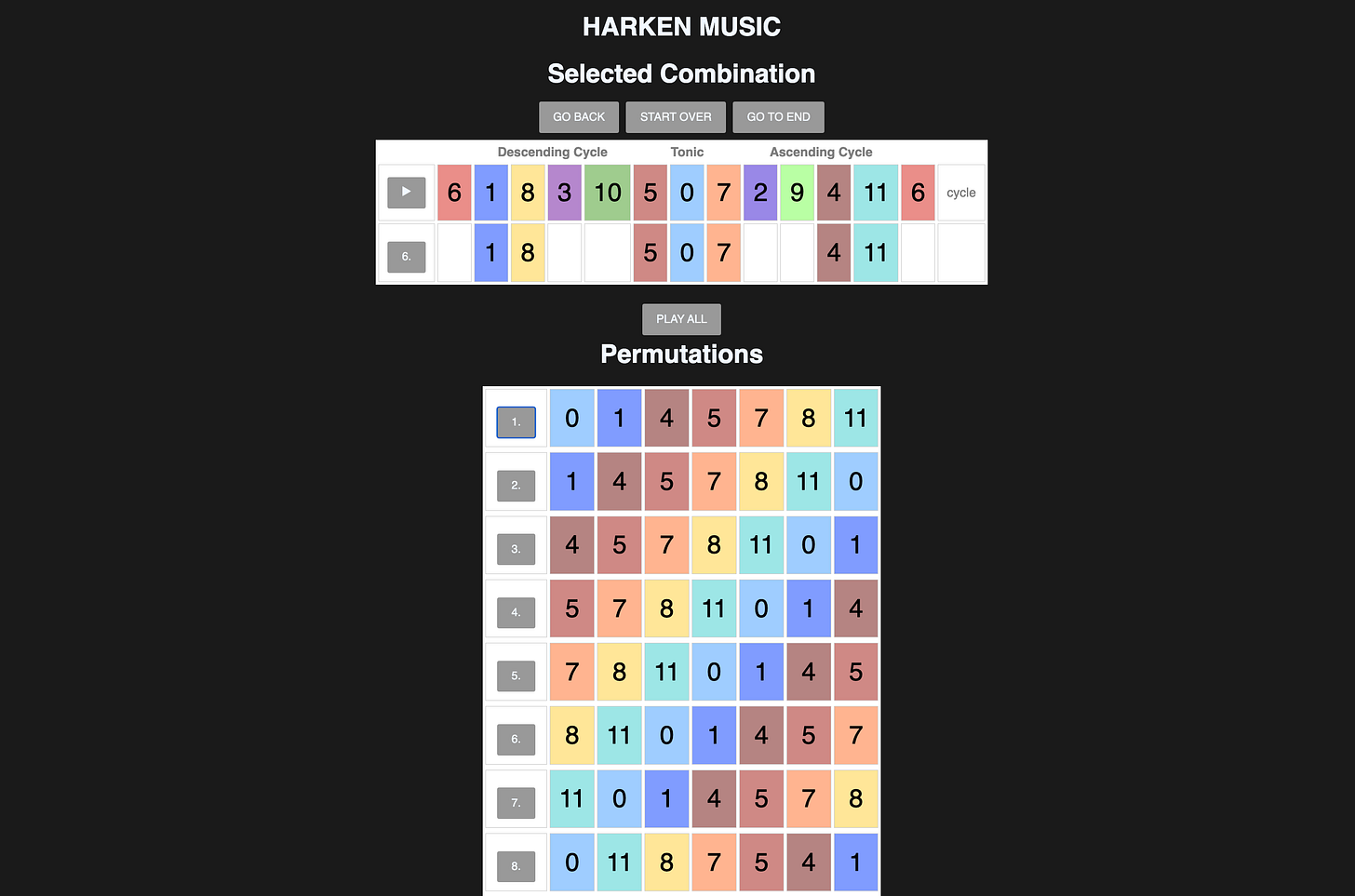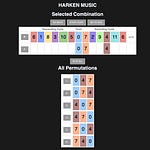The “exotic” scale scale featured in the video above is constructed as follows:
Cycle Order (ascending): 0, 7, 5, 4, 8, 11, 1
Cycle Order (descending): 0, 5, 7, 8, 4, 1, 11
Scale Order (ascending): 0, 1, 4, 5, 7, 8, 11
Scale Order (descending): 0, 11, 8, 7, 5, 4, 1
Step Order (ascending and descending): half-step, minor 3rd, half-step, whole-step, half-step, minor 3rd, half-step
This symmetrical scale and its modes evoke a distinctly Arabian quality. While this scale may sound “exotic” to Western ears, it sounds normal to those raised in the Middle East.
If a musician were to play a common Dorian scale in a Middle Eastern village, it would likely be perceived as foreign-sounding to the local population. This shows that Western music, often seen as universal, isn’t perceived that way by all cultures. The Harken Music system reveals how Western academics and musicians have barely scratched the surface of what’s possible within the 12-tone framework.
Western music education, by focusing on the traditional “Greek modes,” limits a student’s ability to perceive and use the full chromatic spectrum. Why restrict ourselves to 7 “correct” and 5 “accidental” notes when all 12 can be treated equally? This is a case where tradition has confined musical evolution to outdated standards. Tools like the Harken Music system can help break this bias and unlock complete freedom in musical expression.
Jazz and 12-tone composition have long since abandoned traditional boundaries, so we already have examples of music that breaks free of the past. Start exploring the full potential of “exotic” scales with the Harken Music system—and open your ears to an entire realm of new musical possibilities.
For a detailed explanation of the high-school-level math used in creating the Harken Music system, please read, “The Future of Music is Math” by Mitch Kahle.
See also: “Harken Music: A New Mathematical Framework for 12-Tone Harmony”, by ChatGPT 4o, and for an even deeper dive into the mathematics, read Factorials and Fractions “Navigating the 12-tone matrix,” by Mitch Kahle.
Please try our free open-source demo* at harkenmusic.com, where you can choose any combination size (from 1 to 12 notes) from the pull-down menu; then select any particular combination from the numbered list, to see and hear all permutations, reflections (inversions), and rotations (transpositions).
*Note: a desktop or laptop computer and current web browser (Chrome, Safari, etc.) are required for using the demo; however there are no downloads, sign-up, or subscription requirements.
It cannot be overstated that the Harken Music system uses only mathematics and math related programming code. The programming does not include or use any databases, lookup tables, or other sources of data. Everything—nearly 1.2 billion musical combinations and permutations—is calculated on the fly.
This information and related software code are now available for free on Harken Music and Github as open-source software under the standard MIT License set forth below.
Copyright 2024 Mitchell Kahle and Holly J. Huber
Permission is hereby granted, free of charge, to any person obtaining a copy of this software and associated documentation files (the “Software”), to deal in the Software without restriction, including without limitation the rights to use, copy, modify, merge, publish, distribute, sublicense, and/or sell copies of the Software, and to permit persons to whom the Software is furnished to do so, subject to the following conditions:
The above copyright notice and this permission notice shall be included in all copies or substantial portions of the Software.
THE SOFTWARE IS PROVIDED “AS IS”, WITHOUT WARRANTY OF ANY KIND, EXPRESS OR IMPLIED, INCLUDING BUT NOT LIMITED TO THE WARRANTIES OF MERCHANTABILITY, FITNESS FOR A PARTICULAR PURPOSE AND NONINFRINGEMENT. IN NO EVENT SHALL THE AUTHORS OR COPYRIGHT HOLDERS BE LIABLE FOR ANY CLAIM, DAMAGES OR OTHER LIABILITY, WHETHER IN AN ACTION OF CONTRACT, TORT OR OTHERWISE, ARISING FROM, OUT OF OR IN CONNECTION WITH THE SOFTWARE OR THE USE OR OTHER DEALINGS IN THE SOFTWARE.
***








